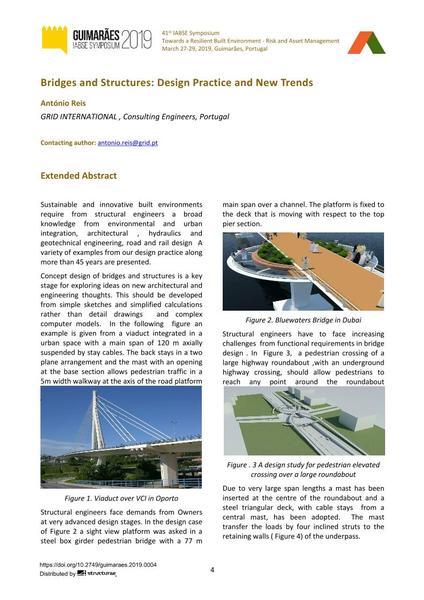Bridges and Structures: Design Practice and New Trends

|
|
|||||||||||
Détails bibliographiques
| Auteur(s): |
António Reis
(GRID INTERNATIONAL, Consulting Engineers, Portugal)
|
||||
|---|---|---|---|---|---|
| Médium: | papier de conférence | ||||
| Langue(s): | anglais | ||||
| Conférence: | IABSE Symposium: Towards a Resilient Built Environment Risk and Asset Management, Guimarães, Portugal, 27-29 March 2019 | ||||
| Publié dans: | IABSE Symposium Guimarães 2019 | ||||
|
|||||
| Page(s): | 4-6 | ||||
| Nombre total de pages (du PDF): | 3 | ||||
| DOI: | 10.2749/guimaraes.2019.0004 | ||||
| Abstrait: |
Sustainable and innovative built environments require from structural engineers a broad knowledge from environmental and urban integration, architectural, hydraulics and geotechnical engineering, road and rail design A variety of examples from our design practice along more than 45 years are presented. Concept design of bridges and structures is a key stage for exploring ideas on new architectural and engineering thoughts. This should be developed from simple sketches and simplified calculations rather than detail drawings and complex computer models. In the following figure an example is given from a viaduct integrated in a urban space with a main span of 120 m axially suspended by stay cables. The back stays in a two plane arrangement and the mast with an opening at the base section allows pedestrian traffic in a 5m width walkway at the axis of the road platform |
||||
